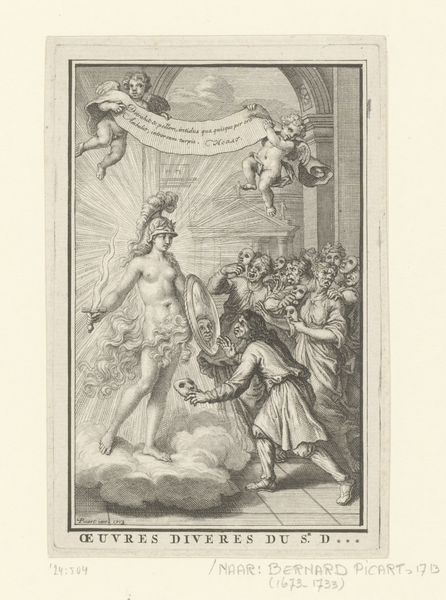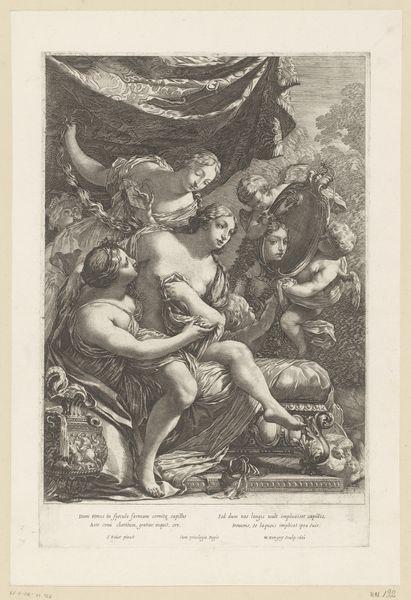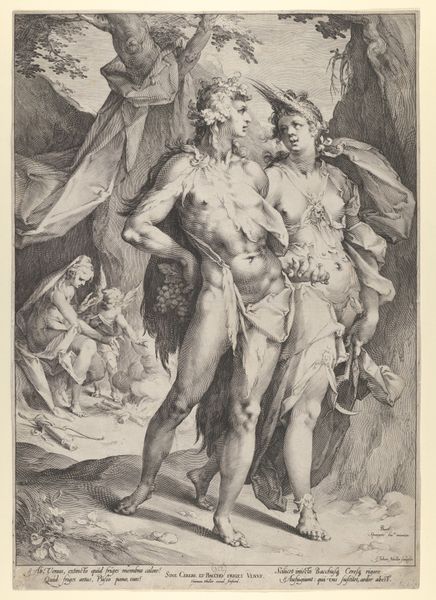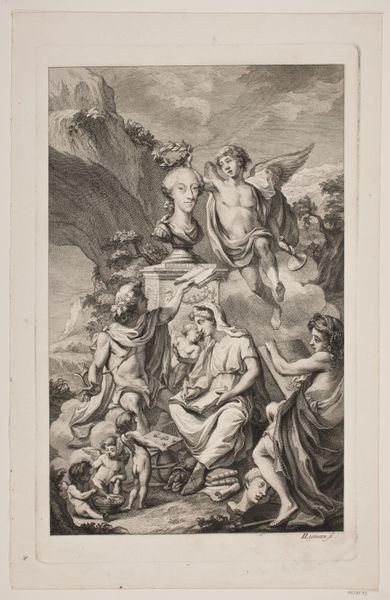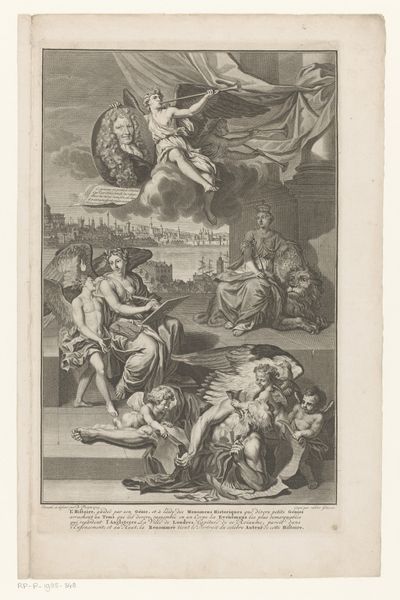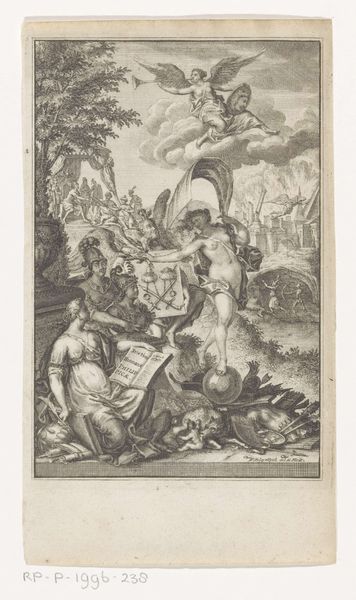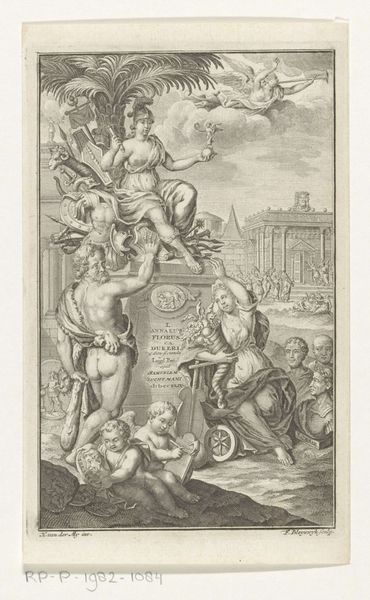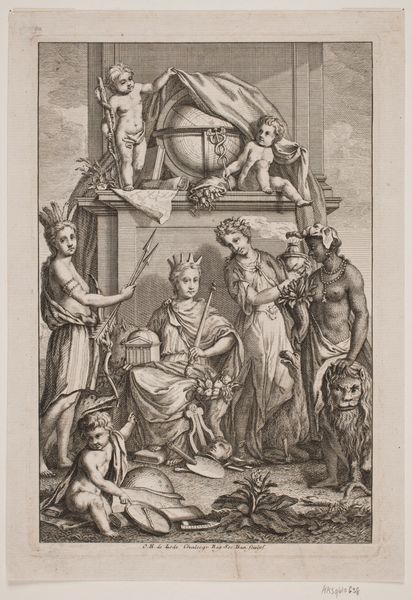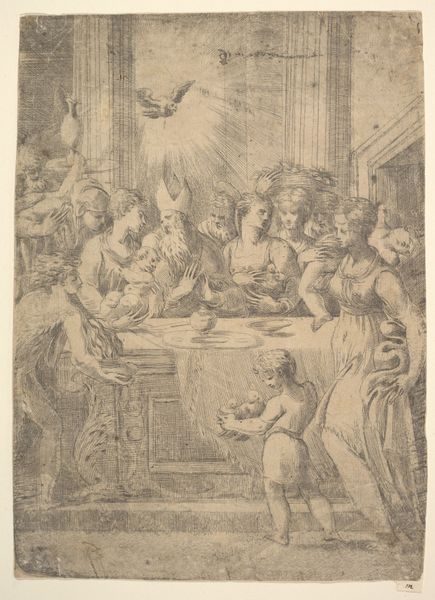
print, etching, engraving
#
allegory
#
baroque
# print
#
etching
#
history-painting
#
engraving
Dimensions: plate: 17.4 x 10.5 cm (6 7/8 x 4 1/8 in.) sheet: 20 x 12 cm (7 7/8 x 4 3/4 in.)
Copyright: National Gallery of Art: CC0 1.0
Editor: Here we have Romeyn de Hooghe's "Law of War and Peace," made around 1670. It's an engraving, and the allegorical scene is so dense with figures! What strikes me most is how the concepts of war and peace seem to be battling for dominance. What do you see in this piece? Curator: It’s fascinating to consider the conditions under which De Hooghe created this print. As a materialist, I’m drawn to how the very act of creating prints – multiple, reproducible images – democratized ideas about law and governance in a way that painted images for elite collectors could not. Think about the paper it was printed on, the ink, and the mechanics of the printing press. Editor: That's a good point! So, how did the medium of printmaking influence the reception of Hugo Grotius's legal theories at the time? Curator: Exactly! De Hooghe is visually disseminating Grotius' ideas. How the labour of the artisan produces these images shapes their meaning. This wasn't just art; it was a vehicle for distributing socio-political concepts into Dutch society on an unprecedented scale, affecting civic and even domestic spaces through its presence and provoking potential resistance and disagreement with the work. Editor: I hadn’t thought about it in those terms before, as a process that allows art to actively shape conversations! Curator: Precisely. Looking at this print, one can interpret much regarding the artist's intention when considering its impact in social spaces rather than exclusively assessing the artist’s skill and aesthetic preference. In that sense, this isn’t a celebration; it is work and can be assessed by the same means. Editor: So, focusing on the labor and mass production really shifts our perspective on what this print signifies! It becomes less about the image itself and more about its role in the circulation of ideas. Curator: Right! Thinking about the socio-political context in which prints are manufactured sheds a light on our understanding of art. Editor: Thanks for clarifying; that makes so much more sense now!
Comments
No comments
Be the first to comment and join the conversation on the ultimate creative platform.
